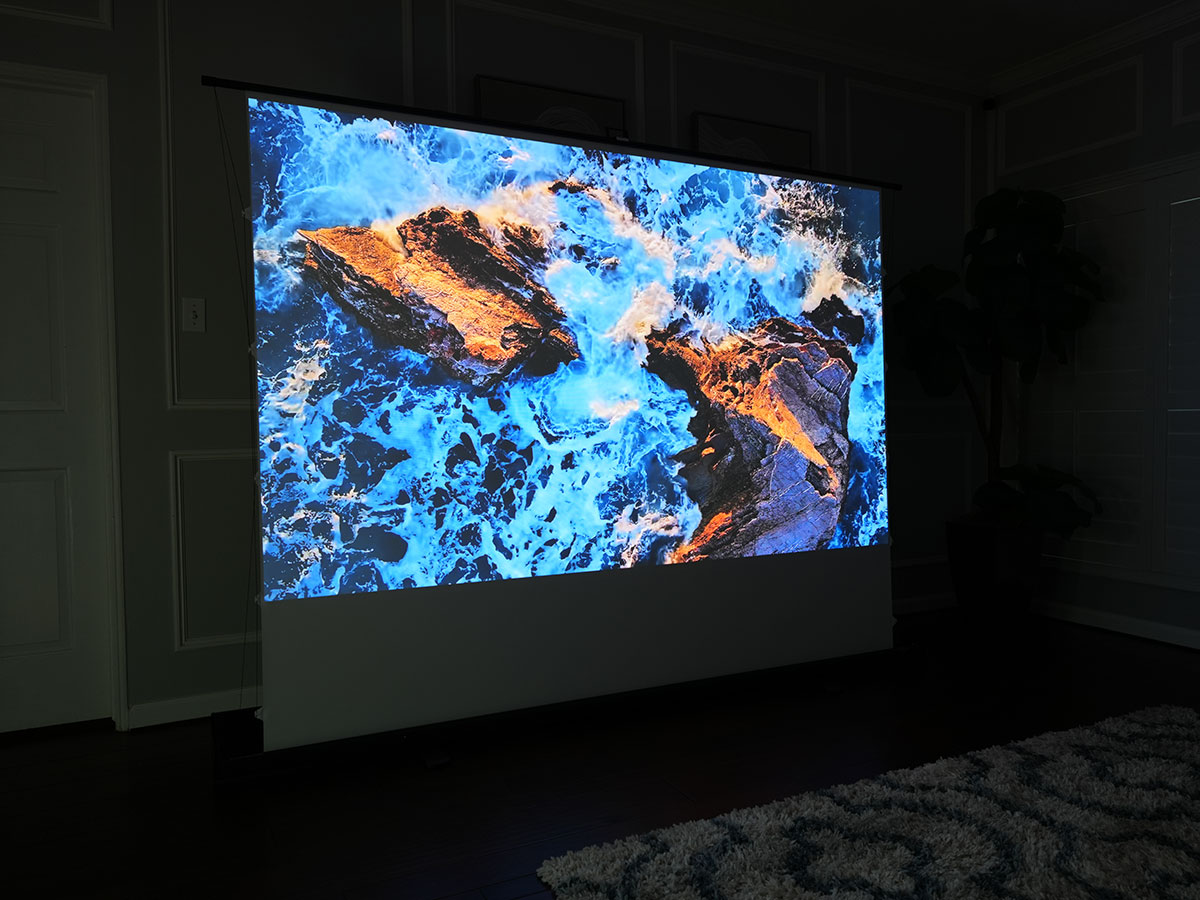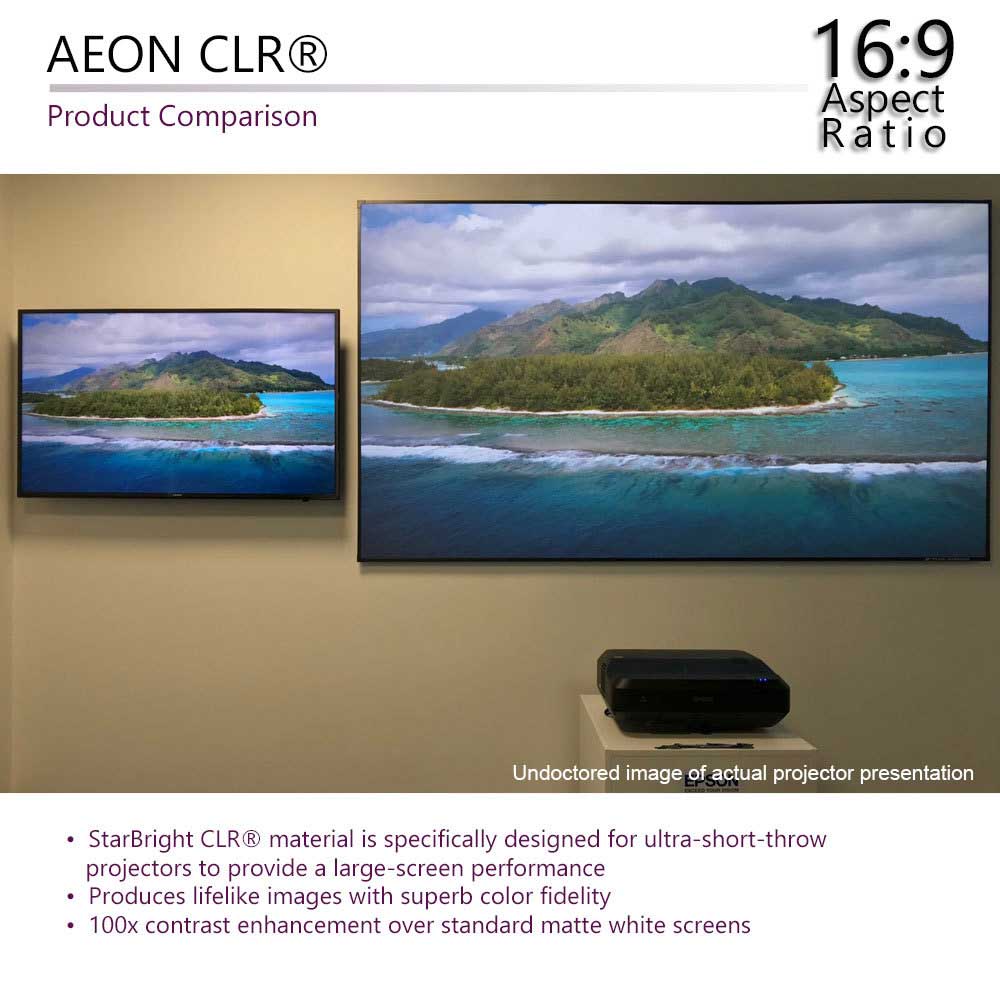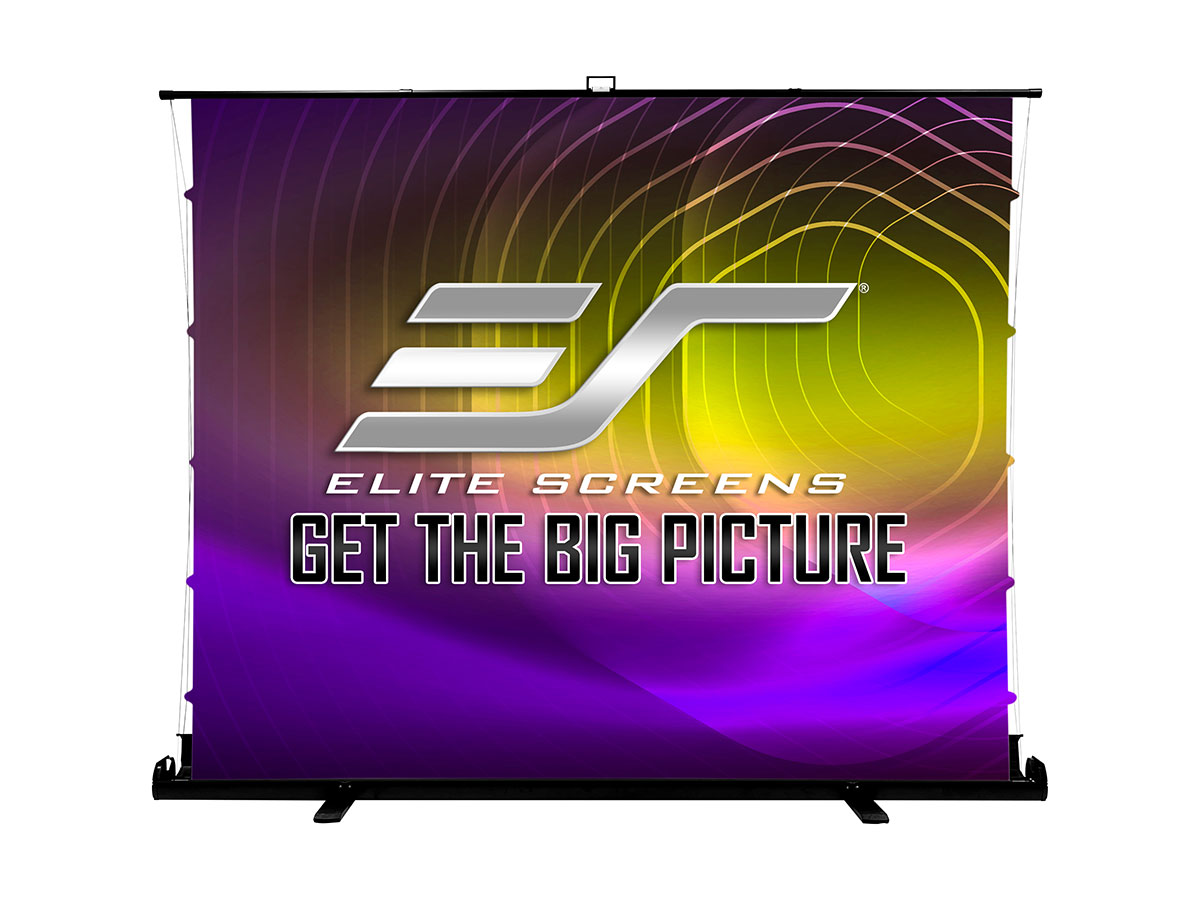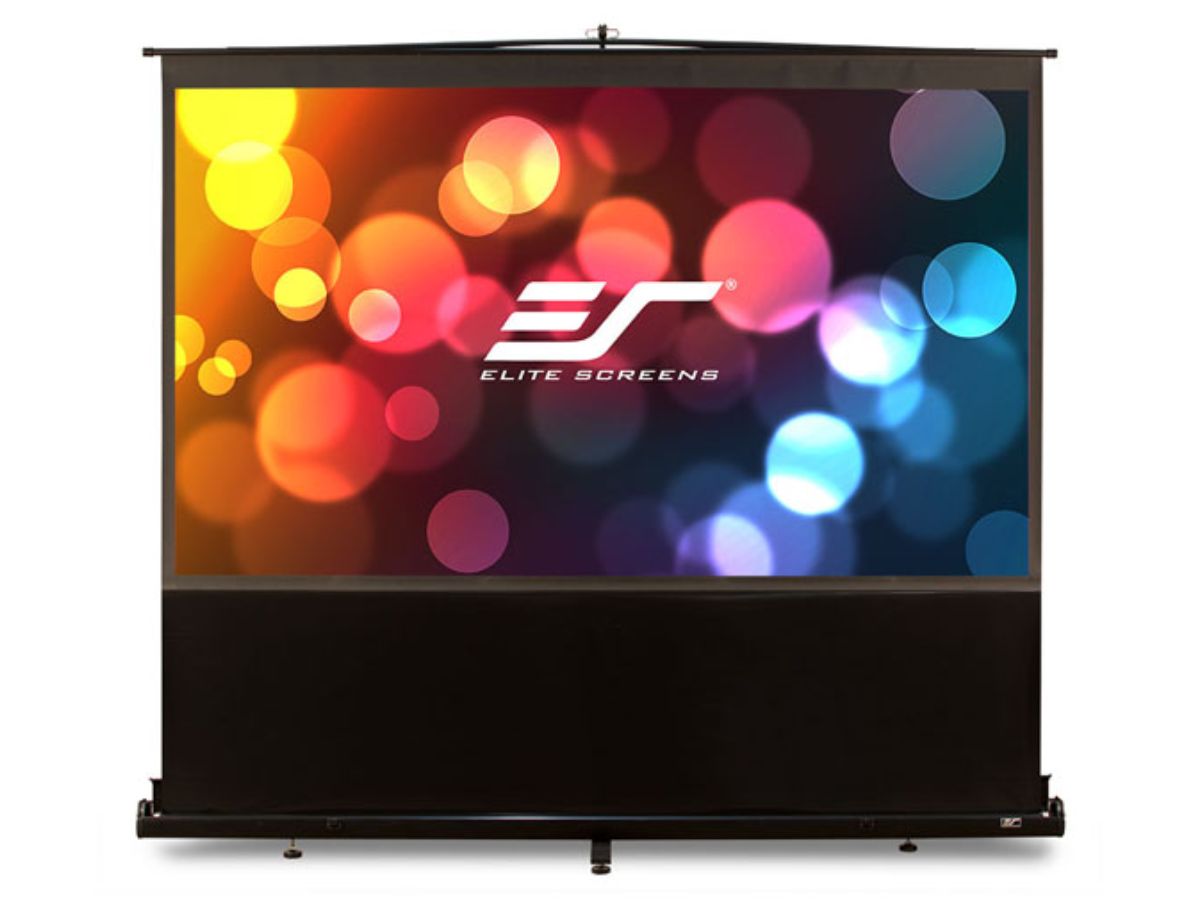How to Address Ambient Light and Make Screen Installs Shine
Understanding Ambient Light and Its Impact on Projection
Instead of thinking about a brighter projector lamp to fight ambient light problems, David Rodgers of Elite Screens says integrators should consider a specialty ambient light rejecting projection screen.
September 06, 2016 By David Rodgers
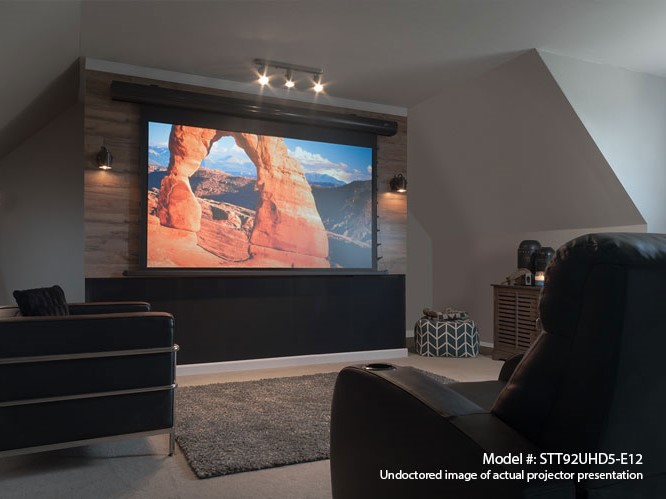
The term “ambient light rejecting” (ALR) is part of the AV industry nomenclature as a screen feature that prevents ambient light from washing out an image. There are AV purists who hate the use of the word “rejecting” and technically, they are correct in their objection.
ALR does the opposite of reject; it either absorbs or diverts ambient light away from the viewer’s field of vision. So why say ALR? Simple, “ambient light rejecting” gives customers an easy mental image of a screen that gets rid of ambient light and its washout effect.
Also, “angular divergent reflectivity of indirect light sources within an absorbent active matrix to mitigate the intrusive effects of luminous inundation onto projected images” is too much of a mouthful and every marketing team out there hated it. Plus, “ambient light absorbent” sounds like something to clean your kitchen floor.
How Does Ambient Light Affect Projector Performance?
To AV Installers, ambient light is any atmospheric lighting that originates from an indirect source of luminance that can be inside, outside, naturally or artificially occurring. Basically, it’s any light source other than your projector that threatens to wash out your image or otherwise impair its visual aesthetics.
This includes but is not limited to light coming through windows and skylights from an outside source, track lighting, in wall/ceiling lights, lamps, candles, fireplaces, or even the light of your own video screen reflecting off light-colored surfaces in your room.
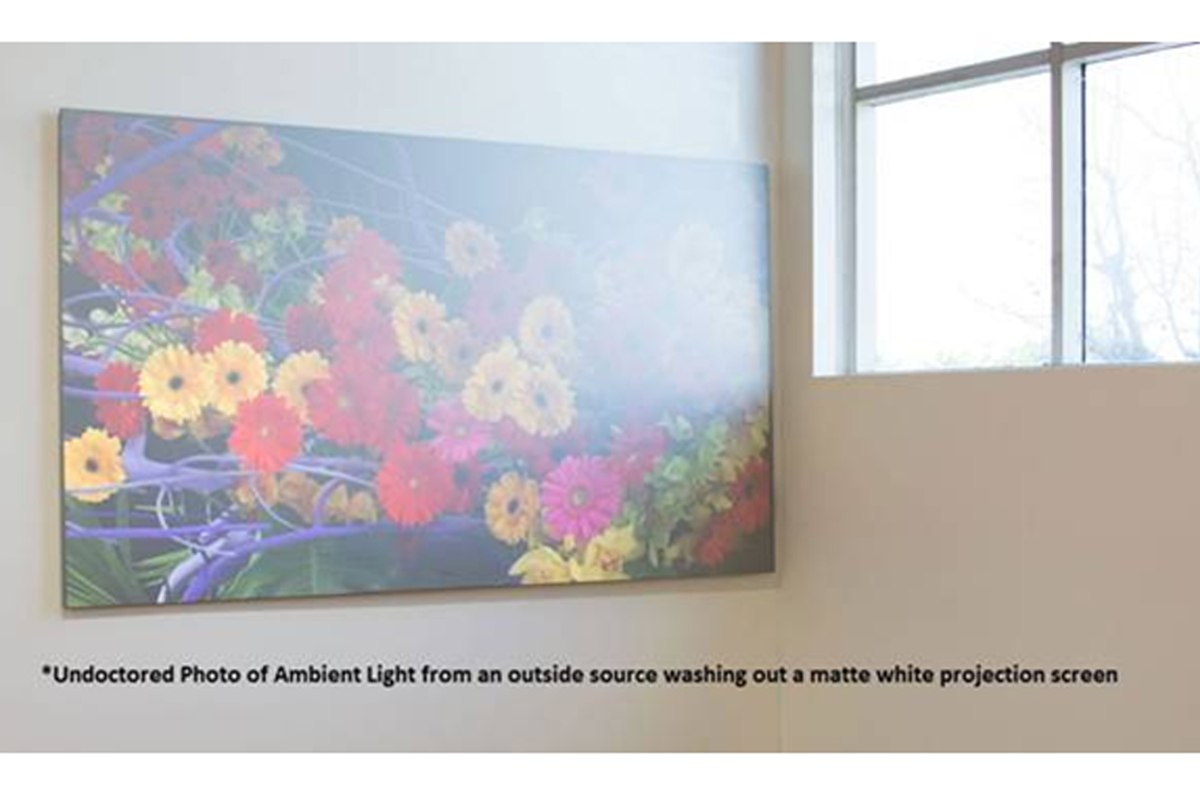
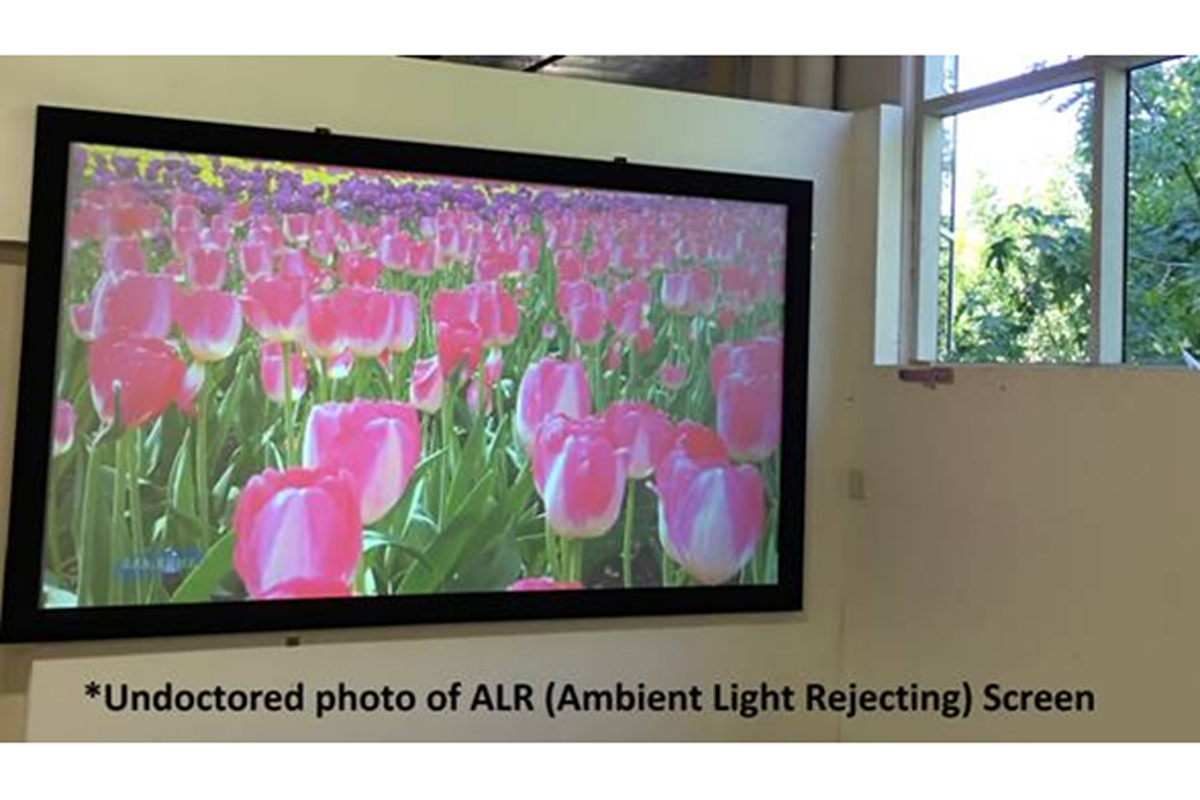
It is surprising but true — light colored walls, ceilings and flooring can all contribute to ambient light problems and negatively affect your video performance. When projected light bounces off your screen, it turns every surface in your room into a potential reflector that will in turn contribute to washing out the fine qualities of your projected image.
How Do We “Reject” Ambient Light?
The bottom line is that most rooms do not have 100 percent control over environmental lighting. As cool as a fully contained home theater room is, most households don’t have them.
Instead, homes are trending toward having large projection screens in living rooms, dens, and media rooms as a means of replacing the household television set. This is entirely feasible as long as you take the needed steps to counter the washout effects of ambient light.
The process is even more crucial in the commercial AV world; think about all of the bright retail areas, restaurants, outdoor spaces, corporate meeting rooms and other spaces in which you install projection screens these days and how little lighting control exists.
To some degree, a brighter projector does help. The extra brightness drowns out a little more of the milky white glare of indirect room lighting but it does bring with it a negative effect as well. As much as you want a bright, colorful image, you don’t want it too bright or your contrast suffers. An excessively bright screen can also cause eye discomfort, so a more practical solution is necessary.
Instead of thinking about a brighter projector lamp, consider a specialty projection screen. ALR screens come in two basic formats. Either they will be Retro Reflective or Angular Reflective.
According to the Law of Reflection, “… the incident ray, the reflected ray, and the normal to the surface of the mirror all lie in the same plane and that the angle of reflection is equal to the angle of incidence.”
ALR surfaces may not fully react in accordance with the Law of Reflection because they add their own variables, which are either micro-structures or multi-layered optical filters. Normal white projector screens have “diffusion uniformity” that scatters the projected light to provide uniform brightness over the full 180 degrees of the projection angle.
However, it scatters all light, not just the projected signal so high levels of ambient light will wash out the image on a standard white screen. Angular Reflective means that light reflects off the surface at precisely the opposite angle of incidence exactly as the laws of reflection describe.
This type of screen is the preferred model for commercial applications but also widely popular with residential applications. The material prevents full diffusion from occurring to provide greater control over the washout effects of ambient light.
The focused reflectivity rewards viewers with a bright projected image that achieves a superb level of color temperature. At the same time, off-axis light is diverted away from the viewer’s range of visible perception (see graphic below). Its multiple layers of diffusion material further negates the washout effects of ambient light while enhancing black levels for image clarity.
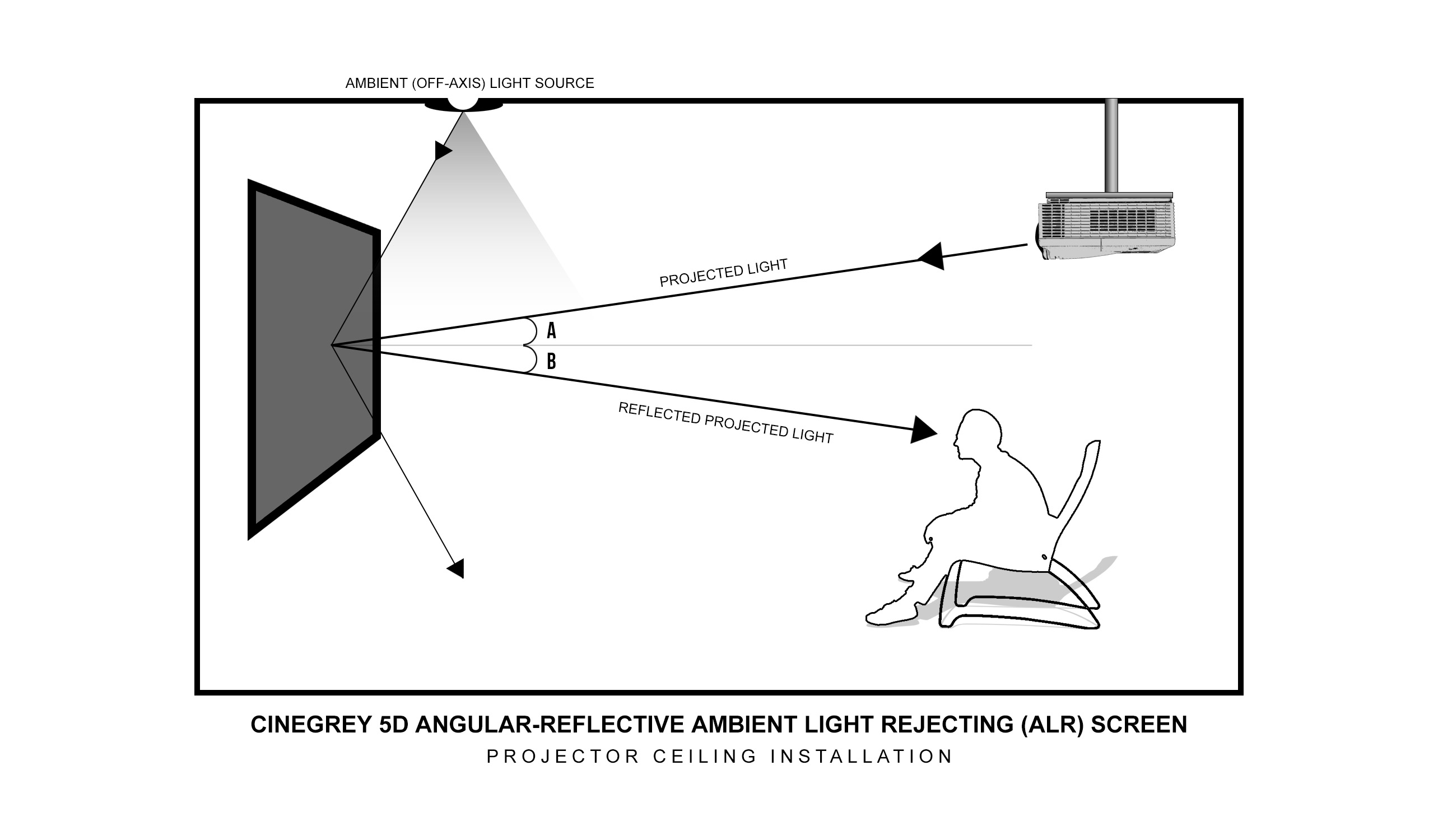
Retro Reflective means that the material will reflect back the image direct to the light source. This limits the options of projector placement but its performance levels are so superb, this format is typically the overall favorite for home theater.
A Retro Reflective ALR screen essentially absorbs ambient light away from the viewer’s field of vision. The screen is capable of doing this by means of an active microstructure design. This means the actual reflective surface of the screen has been structured down to a microscopic level to reflect the projected image directly into the viewer’s field of vision while absorbing the majority of all other indirect light (see below).
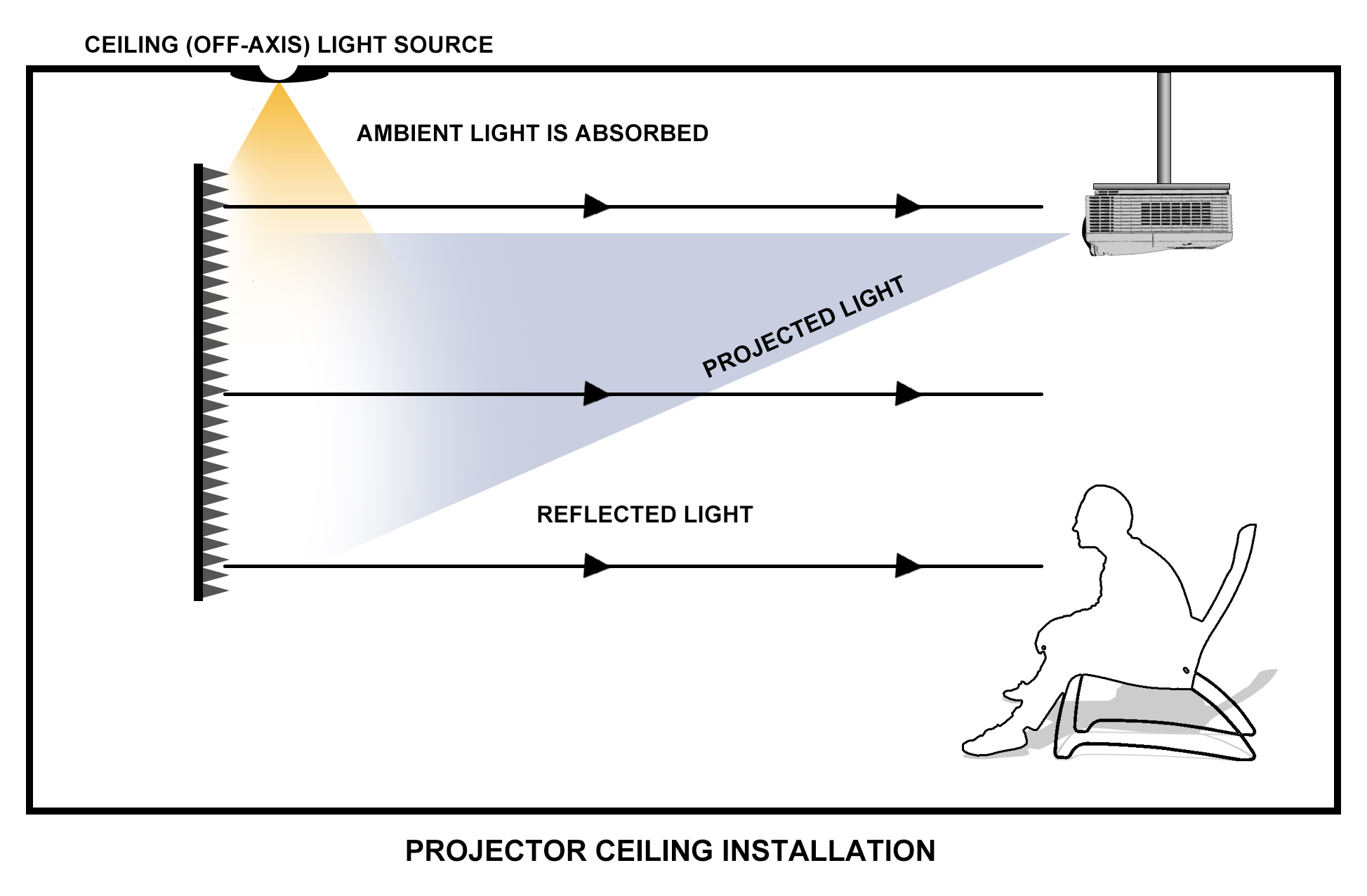
When a cross-section of the active retro reflective material is viewed, it is revealed that the reflective surface actually has a serriform or “saw-tooth” microstructure. This structure acts as a funnel to concentrate the direct light of a projector back in a narrowed angle of reflection that is comparatively a small “pie slice” of the 180-degree brightness of diffusion uniformity.
At the same time, indirect light is either absorbed in the dark saw-tooth formations seen in the picture or otherwise cancelled out by the diffusion layers.
With retro-reflective materials, light coming from the projector must hit the material in direct alignment with the screen’s level center without being off by more than a 5-degree angle. Any vertical off-axis angle of projection greater than that will be reflected off at so extreme an angle that it will not come into the viewer’s field of vision.
How Do I Calculate This Angle?
There are two steps you must take:
- Know where and how your screen should be positioned in accordance to where your viewers shall be.
- Make sure your angle of projection is correct regardless if tabletop or ceiling mounted.
Here are the basics in positioning your screen.
- Viewing: The optimal alignment with the human eye should be with the bottom third of the screen’s overall height. (Note: the average height of the human eye level is roughly 50 inches seated and 60 inches standing.)
- Seating: The optimal viewing distance from which one can comfortably view a projection screen is 1.5 times the screen’s actual width.
ALR enables the viewer to maximize the effects of optimal contrast and even ISF Certified Color Temperature. It enhances brightness while filtering out ambient light.
This creates a realistic image that allows 4K content to be appreciated in its full glory with the lights on or off. Color is more defined; the sharpness and image clarity of high resolution (UHD and 4K) content is more defined; and your end users are more satisfied.
Author David Rodgers is marketing manager for Elite Screens and has more than 20 years of experience in the AV and wireless communications industries.

